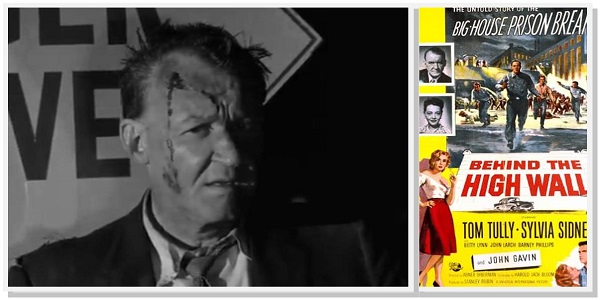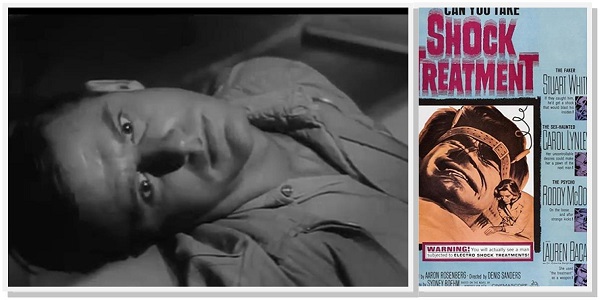In classic noir, victimization is mostly a protagonist’s own subscription gone wrong. And it’s not always an affliction solely of his/her own self. Abner Biberman’s Behind the High Wall (1956) shows this side of noir film through his anti-hero of a jail warden.
For Warden Carmichael (Tom Tully), life isn’t so bad with his handicapped but loyal and loving wife Hilda (Sylvia Sidney) until he is taken hostage by a group of convicts during a prison break. The runaway attempt ends up in a car crash that leaves most others dead but Carmichael and Johnny (John Gavin), another inmate taken hostage by the group, survive. Carmichael then makes a choice that will put Johnny’s life on death row while his own life difficult to carry on his shoulders.
Behind the High Wall delivers the key noir element of depiction of darkness; Carmichael’s character shows the two conflicting sides – bright and dark – in alternation The movie’s tone accordingly becomes darker as the plot moves forward and the warden increasingly becomes the prisoner of his conscience with his righteous wife serving as its guard. The upending of the lead character couldn’t have been more masterful.
Whether it’s Biberman or the screenwriter (or both) who deserves the credit, the movie’s use of metaphor for victimization stands out to the viewer. Most notably, the framed picture of Hilda getting knocked down and smashed during the scuffle between Carmichael and Johnny predicts the victimization of Hilda, which later becomes the climactic ending. At the same time, her character shows its power in enabling her husband to do the right thing, raising the question who really is disabled in the non-physical sense.
For its dramatic tension, character conflict, and persistent darkness of tone and character, Behind the High Wall qualifies for inclusion in the album of engaging noir films.




